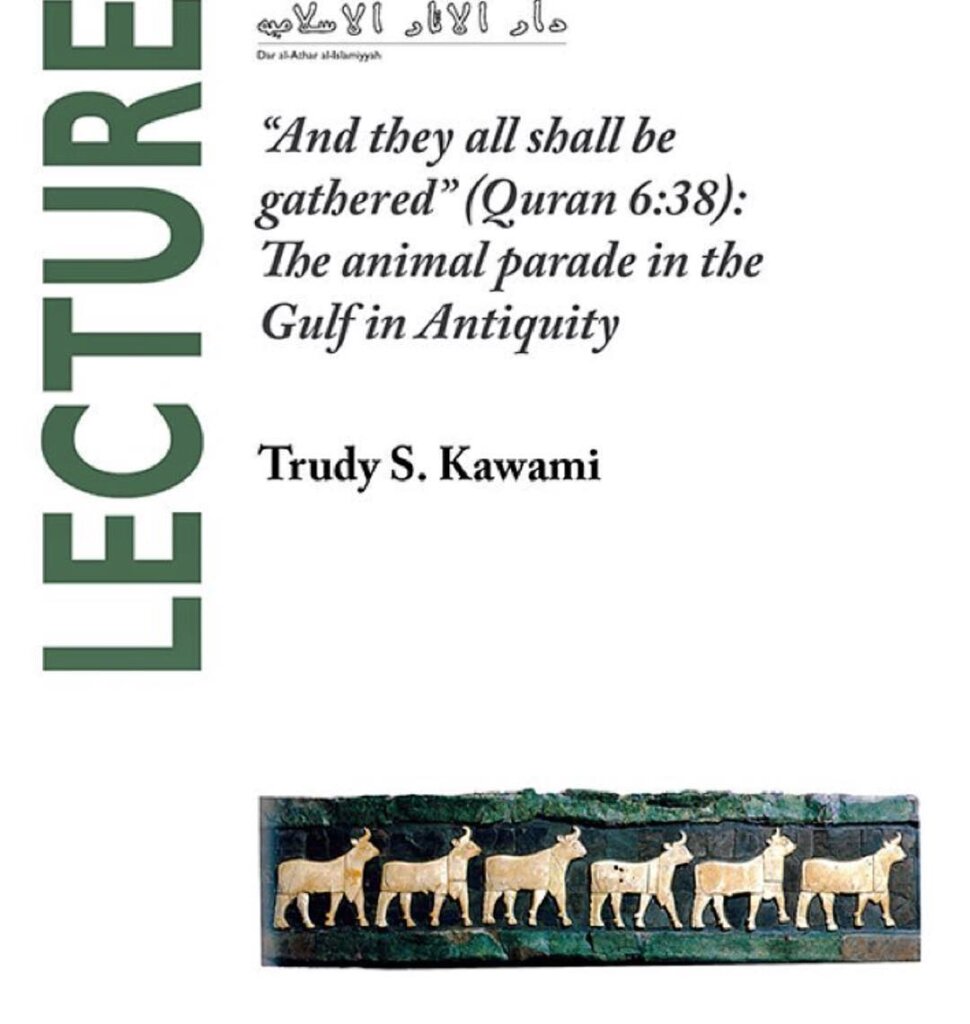Trudy S. Kawami
Dr Trudy S. Kawami, Director of Research for the Arthur M. Sackler Foundation, NYC, is a specialist in the art of ancient Western Asia. She has carried out research in Turkey, Iran, and Central Asia, and in major European and American museums. Dr Kawami has published numerous books and articles and lectures frequently. She has a special interest in the mingling of ancient cultures in the Gulf area and along the Silk Road in Central Asia and curated the Iron Age section of Splendors of the Ancient East: Antiquities in The al-Sabah Collection.
“And they all shall be gathered” (Quran 6:38): The animal parade in the Gulf in Antiquity
The gazelle and the wild goat were native to the Gulf and appeared in the earliest art from the region. Just as the blue waters of the Gulf provided a highway for humans, it served the movement of animals as well. The heavy-horned water buffalo was native to South Asia, but took up happy residence in the reed swamps of the head of the Gulf and appeared in ancient art as far north as Syria. Exotics like the maned Asiatic lion never lived here in nature, but may have been kept in royal zoos and were quickly adopted as international symbols of power and authority. The fascinating mix of local and exotics animals, whether domesticates or wild, nicely mirrors the diversity of peoples who moved through the Gulf in antiquity.

Trudy S. Kawami. “And they all shall be gathered” (Quran 6:38): The animal parade in the Gulf in Antiquity
CS21-L 20